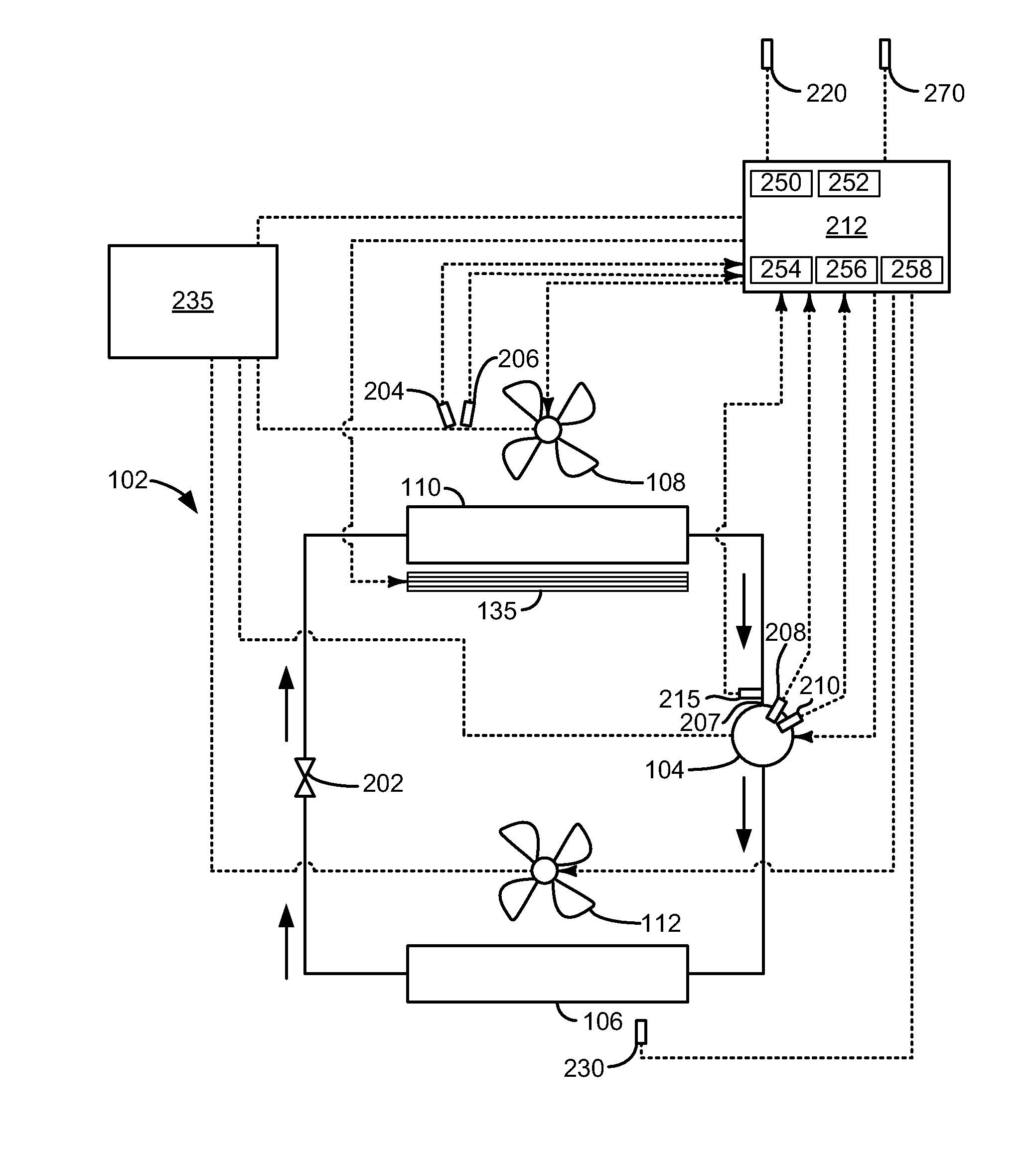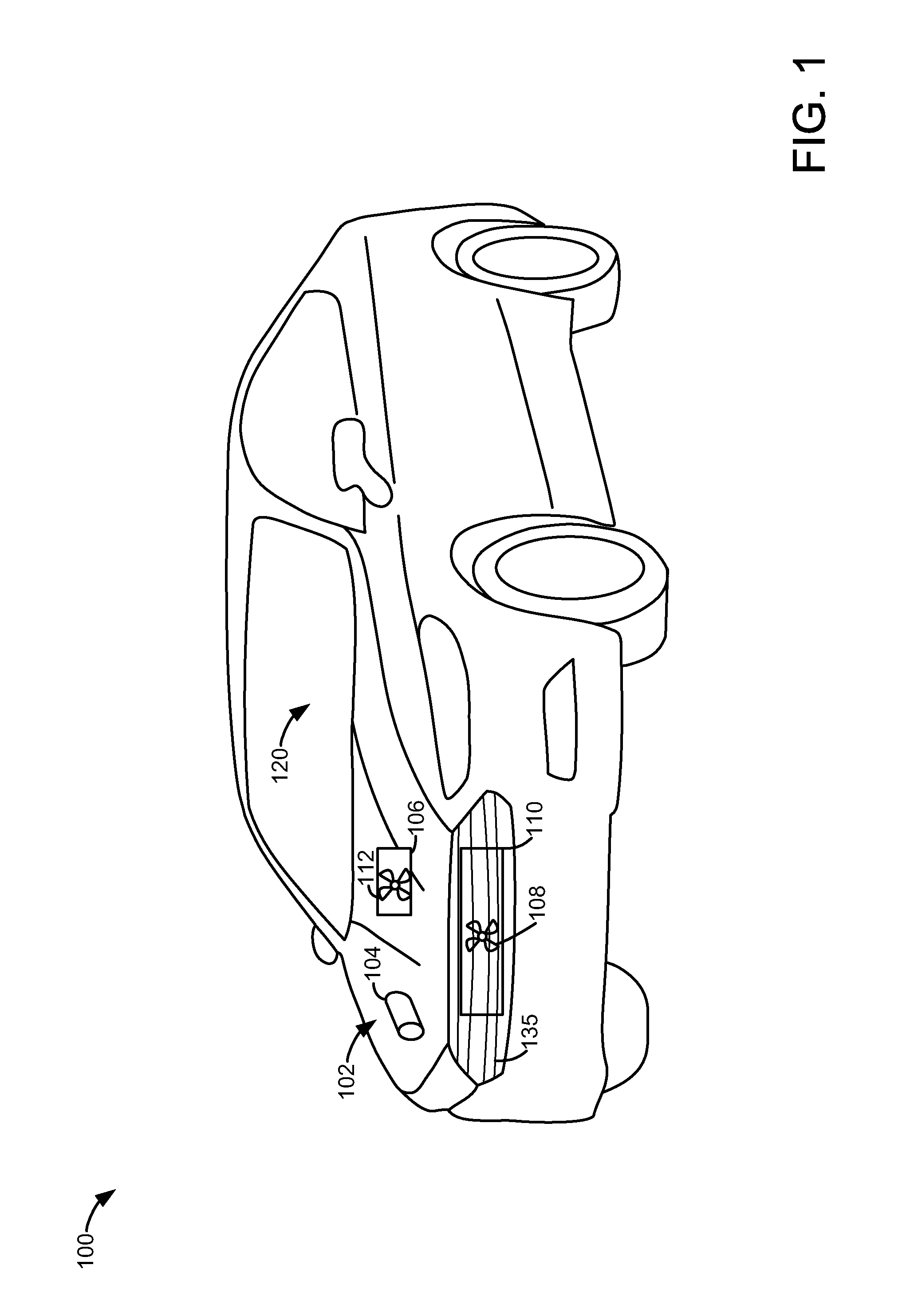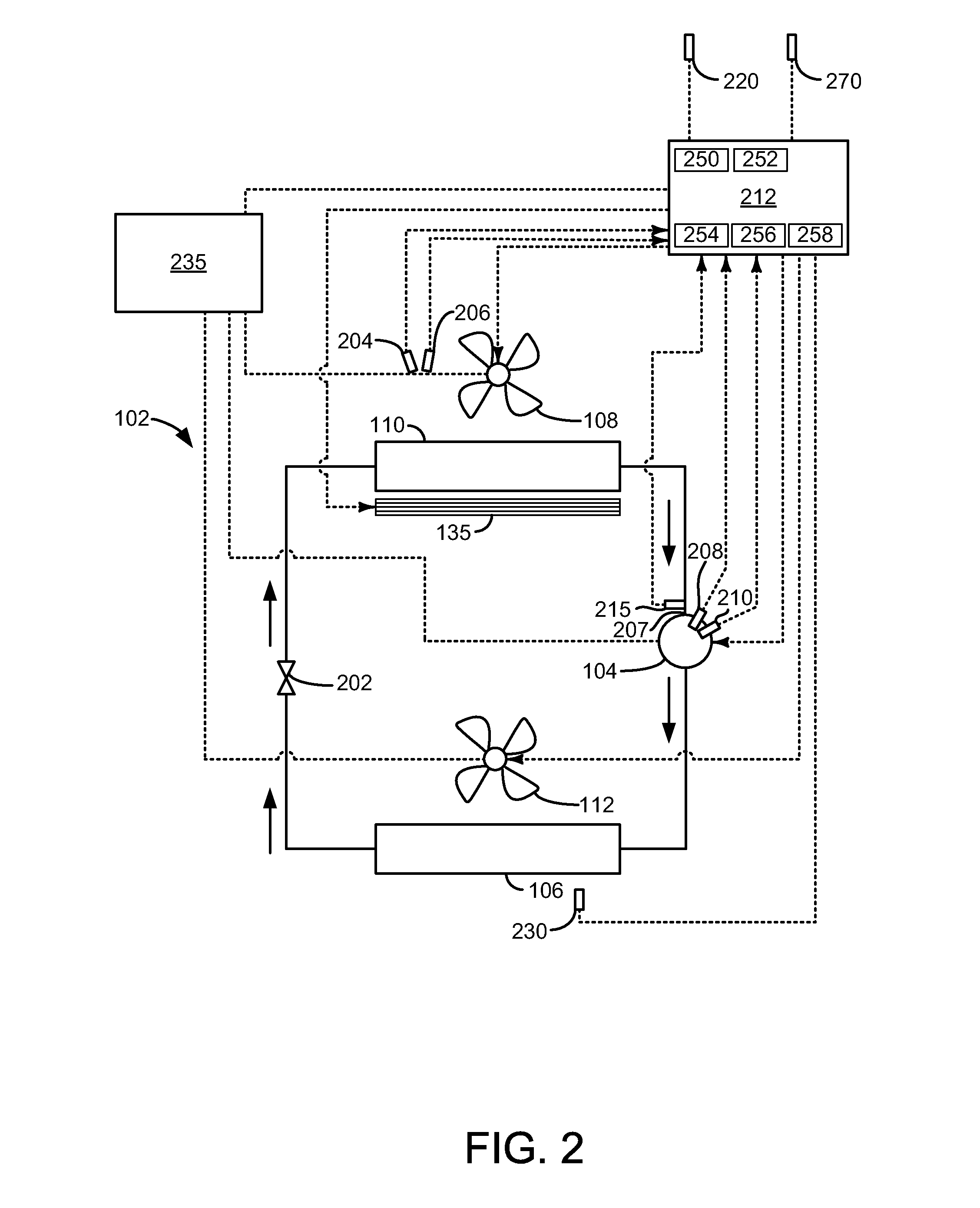Method for adjusting fan and compressor power for a vehicle cabin heating system
a technology for heating systems and compressors, which is applied in the direction of heat pumps, domestic cooling devices, lighting and heating devices, etc., can solve the problems of heat pump may consume more energy than is desired, and the vehicle in which the heat pump operates may provide less driving range than is desired, so as to reduce the output power of compressors, save energy, and achieve the effect of reducing the output power
- Summary
- Abstract
- Description
- Claims
- Application Information
AI Technical Summary
Benefits of technology
Problems solved by technology
Method used
Image
Examples
Embodiment Construction
[0013]The present description is related to improving efficiency of a vehicle cabin heating system. The vehicle may be a passenger vehicle as shown in FIG. 1 or a commercial vehicle. The vehicle cabin heating system may include a heat pump as is shown in the heating system illustrated in FIG. 2. The vehicle cabin heating system may operate as shown in FIG. 3 according to the method of FIGS. 4 and 5.
[0014]Referring to FIG. 1, an example vehicle 100 that includes a heat pump 102 is shown. Heat pump 102 includes a compressor 104 that compresses a refrigerant for extracting heat from ambient air to heat passenger cabin 120. Heat pump 102 also includes an evaporator 110 and an evaporator fan 108. Evaporator fan 108 blows ambient air across evaporator 110 to extract heat from the ambient air. Heat pump 102 also includes condenser 106 and condenser fan 112. Ambient and / or cabin air is blown over condenser 106 by condenser fan 112 to cool refrigerant within heat pump 102 and heat passenger ...
PUM
 Login to View More
Login to View More Abstract
Description
Claims
Application Information
 Login to View More
Login to View More - R&D
- Intellectual Property
- Life Sciences
- Materials
- Tech Scout
- Unparalleled Data Quality
- Higher Quality Content
- 60% Fewer Hallucinations
Browse by: Latest US Patents, China's latest patents, Technical Efficacy Thesaurus, Application Domain, Technology Topic, Popular Technical Reports.
© 2025 PatSnap. All rights reserved.Legal|Privacy policy|Modern Slavery Act Transparency Statement|Sitemap|About US| Contact US: help@patsnap.com



